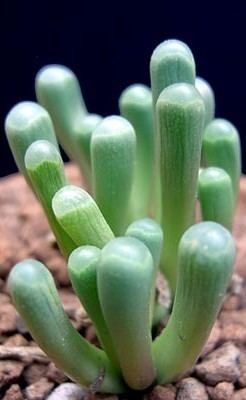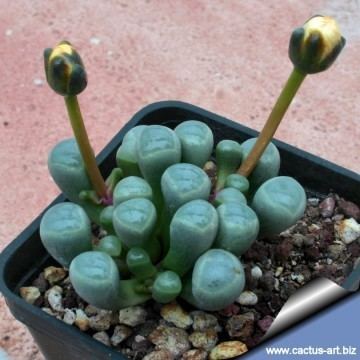Family Aizoaceae Scientific name Fenestraria | Species F. rhopalophylla Rank Genus | |
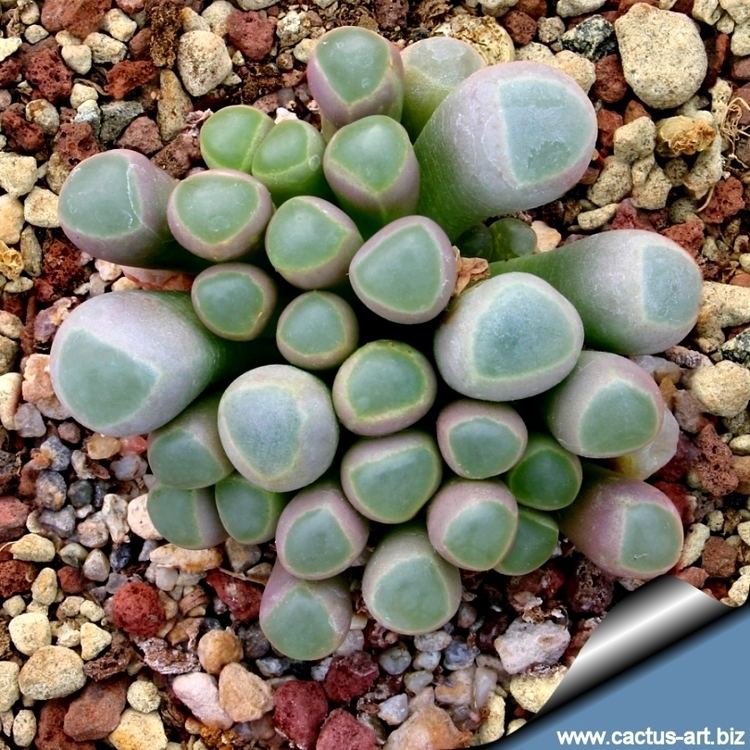 | ||
Similar Frithia, Pleiospilos, Gibbaeum, Titanopsis, Argyroderma | ||
Fenestraria garden plants
Fenestraria (known as babies' toes or window plant) is a (possibly monotypic) genus of succulent plants in the family Aizoaceae, native to the Namaqualand in Namibia.
Contents
- Fenestraria garden plants
- Fenestraria rhopalophylla aka baby toes
- Description
- Distribution and habitat
- Subspecies
- References
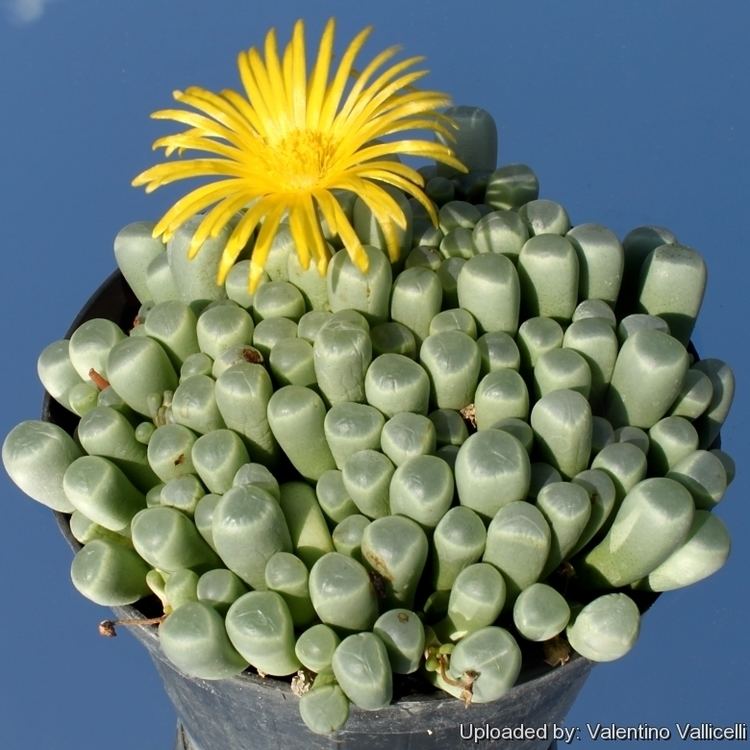
Fenestraria rhopalophylla aka baby toes
Description
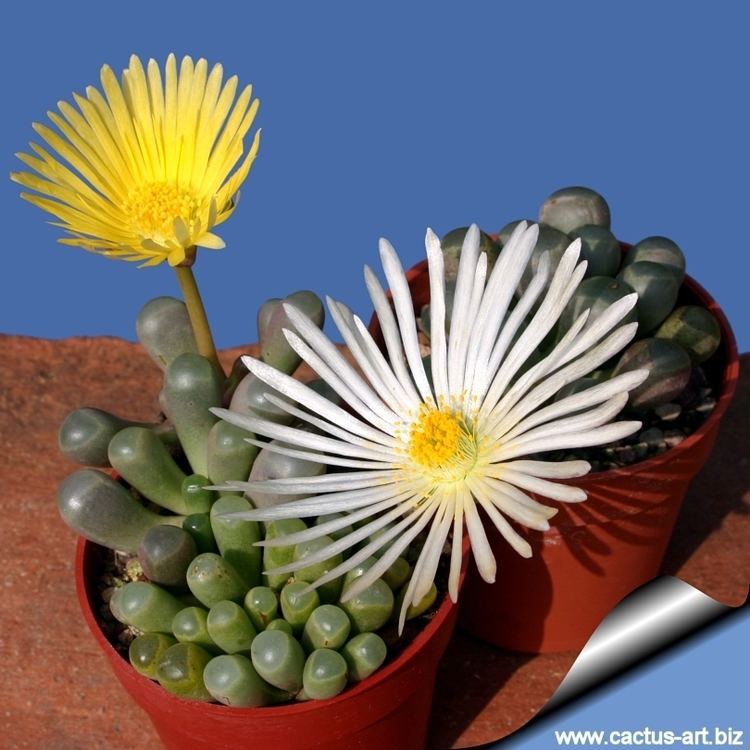
The currently recognised species in this genus is Fenestraria rhopalophylla. Each leaf has a epidermal window, a transparent window-like area, at its rounded tip, it is for these window-like structures that the genus is named (Latin: fenestra).
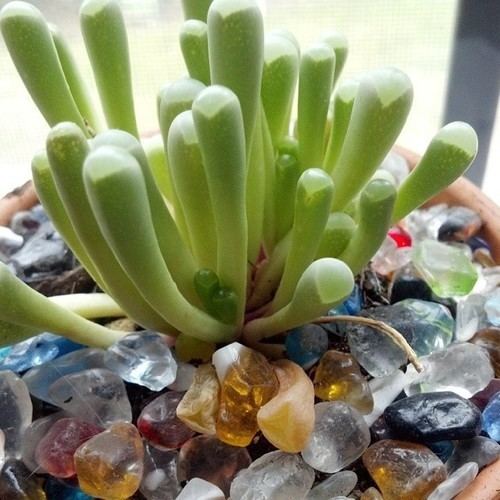
F. rhopalophylla appears very similar to Frithia pulchra, though the leaves are a slightly different shape and F. rhopalophylla has yellow flowers, compared to the pink flowers of F. pulchra.
Distribution and habitat
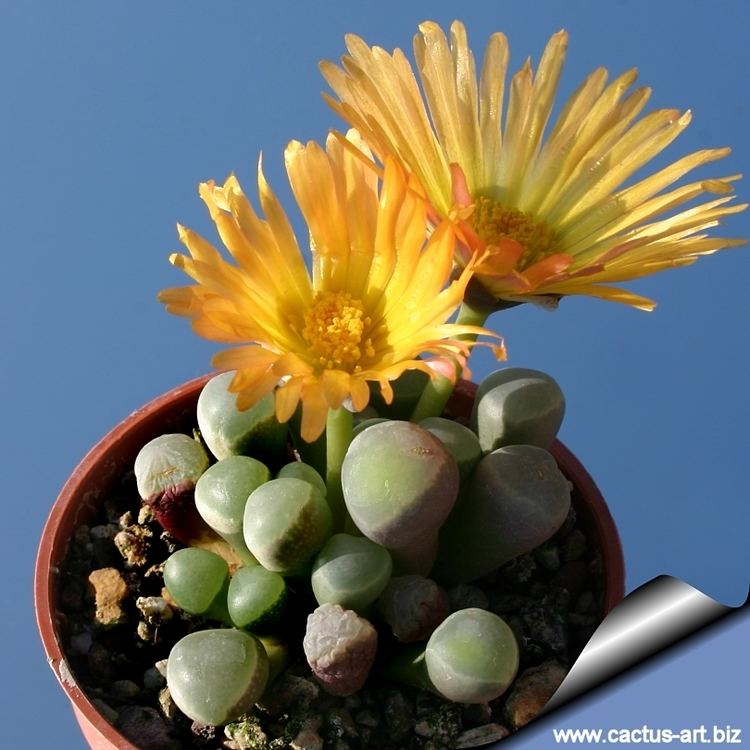
In the wild, the plant commonly grows under sand, except for the transparent tips, which allow light into the leaves for photosynthesis. The plant produce optical fibers made from crystalline Oxalic acid which transmit light to subterranean photosynthetic sites.
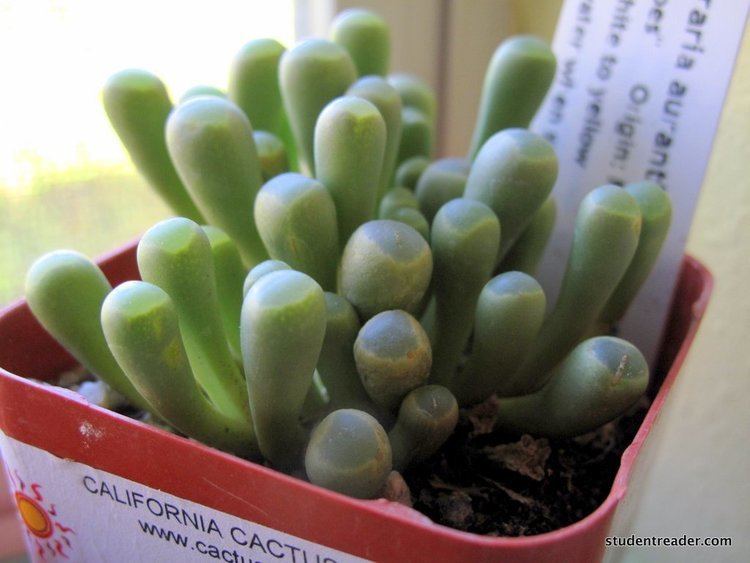
Fenestraria rhopalophylla is native to Namaqualand in southern Africa and to Namibia. The plants generally grow in sandy or calciferous soils under low < 100 mm rainfall, that occurs in the winter.
Subspecies
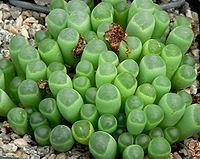
The status of Fenestraria aurantiaca is under review to determine whether its proper status is that of a full species or a subspecies of Fenestraria rhopalophylla.
